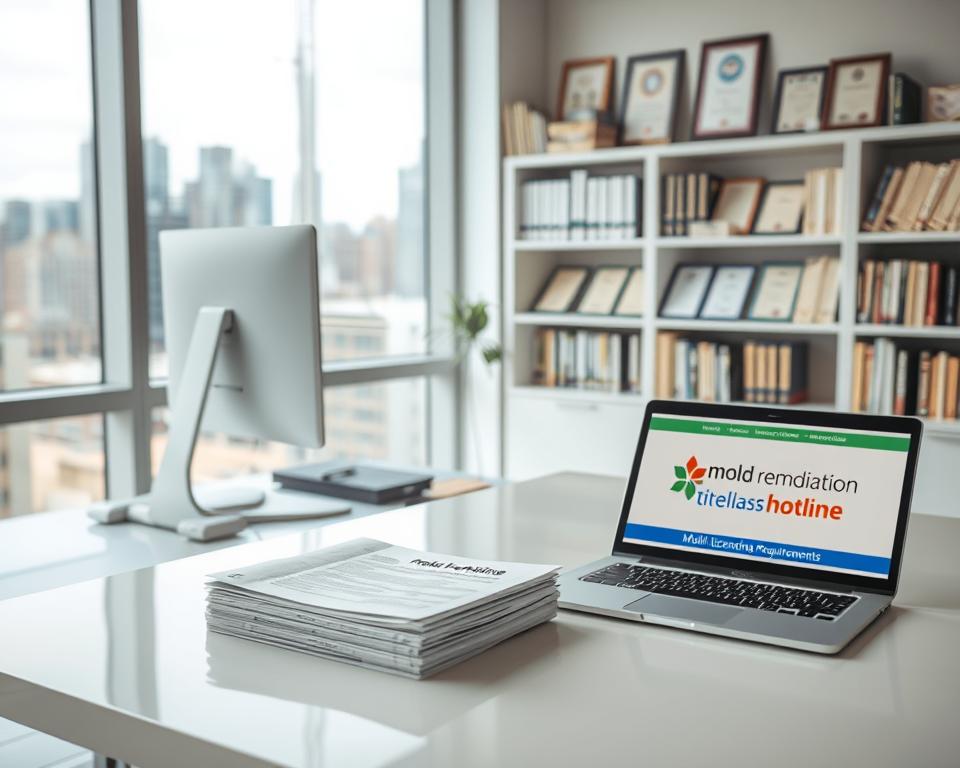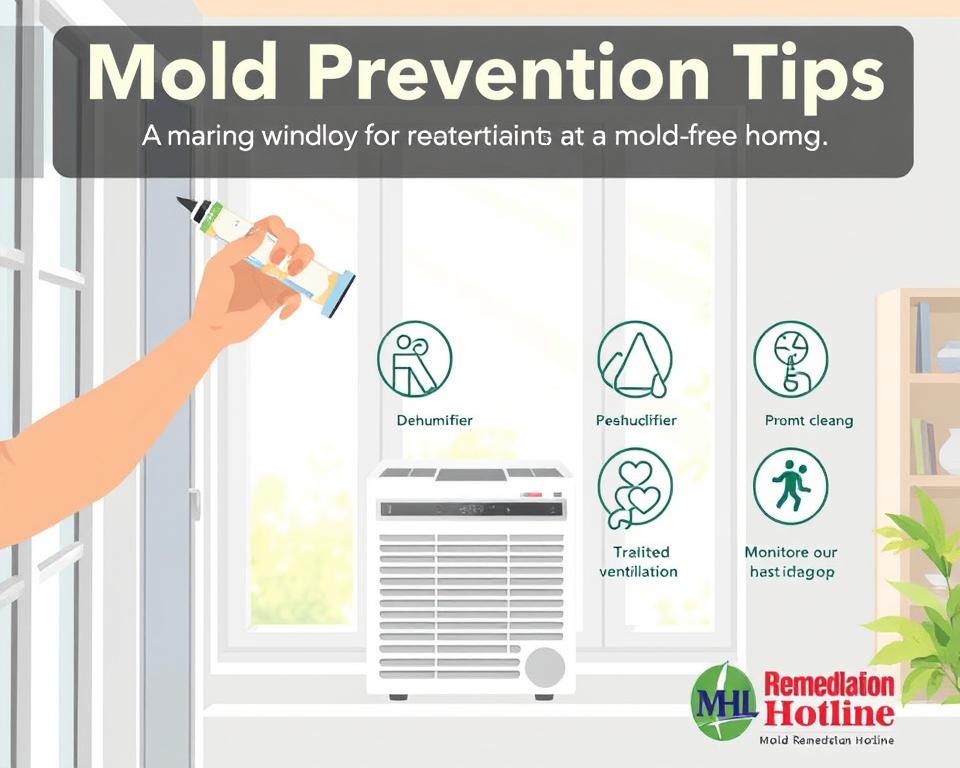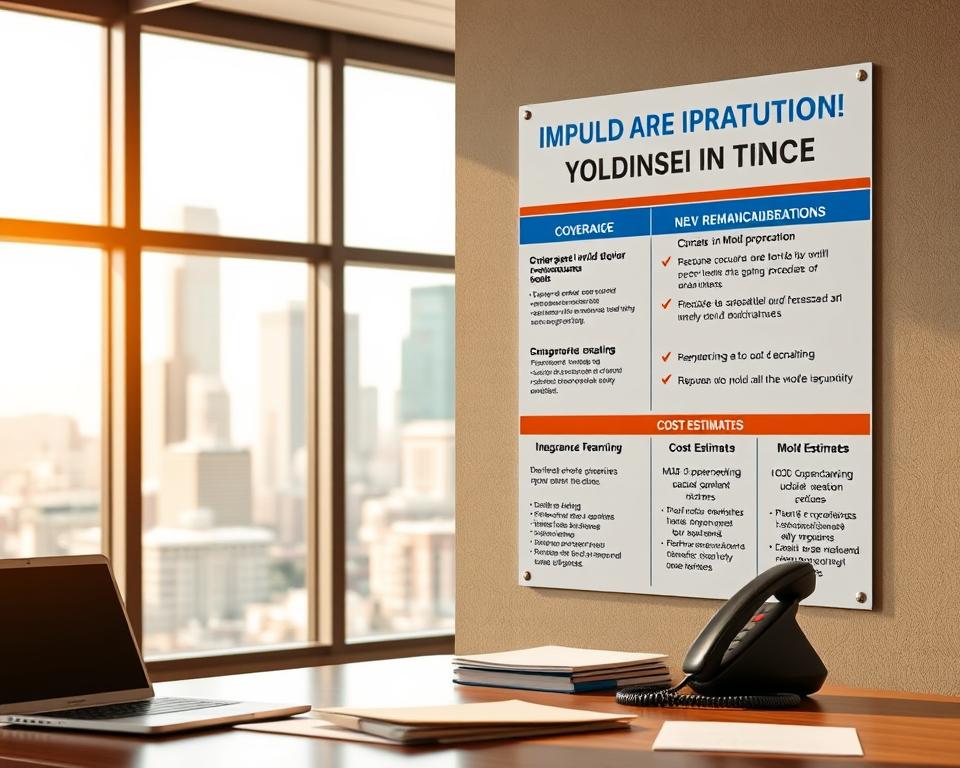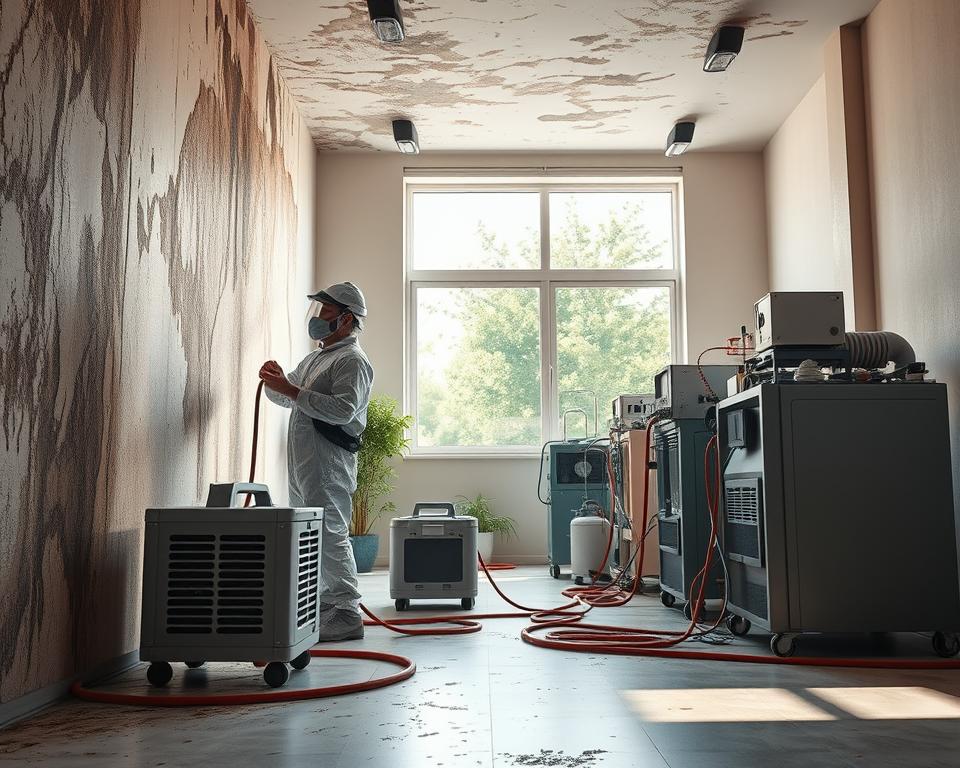Imagine walking into your home after a long day, only to be greeted by the musty smell of mold. This scenario is all too familiar for many Texans, where the humid climate creates the perfect breeding ground for mold growth. Mold can spread quickly, damaging your home and posing serious health risks if left unchecked.
Understanding the importance of proper mold remediation is crucial for any homeowner. Not only does it protect your property from structural damage, but it also ensures a safe and healthy living environment. In Texas, where mold growth is particularly prevalent, knowing how to address this issue effectively can save you from costly repairs and potential health hazards.
This guide is designed to provide you with expert strategies and essential information to tackle mold problems head-on. From the initial assessment to the final clearance, we’ll cover everything you need to know about mold remediation in Texas.
Whether you’re dealing with a small area of mold or a widespread infestation, this guide will walk you through the process step-by-step. We’ll also discuss the role of licensed professionals and how to ensure your home is restored to a safe and mold-free state.
Key Takeaways
- Understand the risks of mold growth in your home.
- Learn how to identify and address mold issues early.
- Discover the importance of hiring licensed professionals.
- Explore the steps involved in effective mold remediation.
- Find out how to prevent future mold growth.
Understanding the Scope of Mold Issues in Texas
Residential areas in Texas are particularly vulnerable to mold growth due to the state’s humid climate and frequent moisture-related incidents. Mold can thrive in various parts of a home, including basements, walls, floors, windows, ceilings, and air ducts. These areas often remain hidden from view, allowing mold to grow unchecked until it becomes a significant problem.
Common Areas Affected by Mold
The high humidity levels in Texas, combined with poor ventilation, create an ideal environment for mold proliferation. Basements and crawl spaces are especially prone to moisture accumulation, making them breeding grounds for mold. Similarly, walls and ceilings near water sources, such as bathrooms and kitchens, are susceptible to mold growth after water damage or leaks.
Environmental and Structural Risks
Unchecked mold growth can lead to severe structural damage and health risks. Moisture from water damage or high humidity seeps into building materials, initiating mold growth. Over time, this can weaken structural elements like wooden beams and drywall, compromising the integrity of a home. Additionally, persistent mold exposure can pose health risks, particularly for individuals with allergies or weakened immune systems.

Early detection is crucial to preventing widespread damage. Professional mold inspections can identify both visible and hidden mold contamination, ensuring all affected areas are addressed. By understanding the common areas where mold thrives and the environmental conditions that foster its growth, homeowners in Texas can take proactive steps to mitigate these issues and protect their properties.
Regulatory Framework and Licensing Requirements
Understanding the legal landscape is essential for anyone dealing with mold-related issues. In Texas, strict regulations ensure that professionals meet high standards to protect homeowners and maintain quality service.
TDLR Licensing Essentials for Mold Assessors and Remediators
The Texas Department of Licensing and Regulation (TDLR) oversees mold-related activities. Both assessors and remediators must obtain licenses, which involves passing exams and meeting specific criteria. This ensures that only qualified professionals handle mold cases.
Certificate of Mold Damage Remediation (CMDR) Overview
A CMDR is required for all remediation projects exceeding 25 contiguous square feet. This certificate, issued by a licensed professional, confirms that the work meets Texas standards, providing homeowners with assurance of a job well done.
Exceptions and Exemptions in the Mold Rules
While licensing is mandatory for most mold projects, some exceptions apply. For instance, small areas under 25 square feet and certain emergency situations may not require a license. However, all activities must still comply with state health and safety regulations.
| License Type | Requirements | Application Process |
|---|---|---|
| Mold Remediation Contractor | Exam, Insurance, Experience | Submit Application, Pass Exam, Pay Fee |
| Mold Assessment Consultant | Exam, Insurance, Credentials | Submit Application, Pass Exam, Pay Fee |
| Mold Remediation Worker | Training, Registration | Complete Training, Register with TDLR |
Homeowners can verify a contractor’s license through the TDLR website, ensuring they hire a qualified professional. This not only guarantees compliance with state regulations but also protects against substandard work.

Assessing Mold Damage and Health Implications
Understanding the health risks and technical methods for assessing mold damage is crucial for homeowners in Texas. Prolonged exposure to mold can lead to serious health issues, making prompt action essential.
Health Risks Associated with Mold Exposure
Mold exposure can cause a range of health problems. Respiratory issues, such as coughing and asthma exacerbation, are common. Allergic reactions and skin irritation may also occur. In severe cases, neurological symptoms can develop, especially in individuals with weakened immune systems.
Mold Inspection and Analysis Techniques
Professional mold inspections involve visual examinations and environmental sampling. Techniques include air and surface sampling to detect hidden mold growth. The CDC advises against routine testing, focusing instead on addressing visible growth and moisture sources.

Thorough inspections are vital for effective remediation. They help identify the extent of damage and inform the necessary steps to restore a safe environment. Early detection prevents further damage and health risks.
Step-by-Step Process of Mold Remediation
Addressing mold issues requires a structured approach to ensure safety and effectiveness. A thorough process involves several key steps, each critical to achieving a successful outcome.
Identifying Moisture Sources and Initial Assessment
The first step in any remediation process is identifying the source of moisture. Moisture is the root cause of mold growth, so locating and addressing leaks, water damage, or humidity issues is essential. Professionals use tools like infrared cameras and moisture meters to detect hidden moisture and assess the extent of the mold contamination.
Containment, Removal, and Cleaning Procedures
Once the moisture source is identified, the affected area is contained to prevent cross-contamination. This involves sealing off the space with plastic sheeting and using negative air pressure machines. Removal procedures vary depending on the material. Porous materials like drywall may need to be removed, while non-porous surfaces can often be cleaned with antimicrobial solutions and HEPA vacuuming.
Post-Remediation Clearance and Documentation
After the removal process, a final inspection ensures all mold has been cleared. Post-remediation clearance involves air and surface sampling to confirm spore levels are safe. A formal certificate is then issued, documenting the successful completion of the remediation process. This step is crucial for ensuring the work meets regulatory standards and provides peace of mind for homeowners.

Key Prevention Strategies for Home Safety
Preventing mold growth begins with a proactive approach to home maintenance. By addressing potential issues early, homeowners can avoid costly repairs and health risks. Regular inspections and prompt repairs are key to maintaining a mold-free environment.
Preventative Maintenance and Household Tips
Start by monitoring humidity levels, ensuring they stay below 60%. Fix water leaks promptly, as moisture is a primary driver of mold growth. Use exhaust fans and dehumidifiers in bathrooms and kitchens to reduce moisture buildup.
Regularly inspect high-risk areas like basements and crawl spaces. Look for signs of water damage or dampness. Professional cleaning services can help prevent recurrent mold issues, especially in areas prone to moisture.
Don’t overlook the importance of ventilation. Proper airflow helps reduce humidity, making your home less conducive to mold growth. Schedule annual inspections with a licensed contractor to identify and address potential issues early.

Remember, early detection saves time and money. By taking these preventative steps, you can protect your home and family from the risks associated with mold. Stay proactive and maintain a safe, healthy living environment.
Insurance Considerations for Mold Remediation in Texas
When dealing with mold issues, understanding your insurance coverage is crucial. Homeowner policies in Texas often cover sudden water damage but exclude gradual leaks or resulting mold growth. This distinction can significantly impact your financial responsibility for remediation.
Understanding Homeowner Insurance Policies and HO-A Coverage
Typically, HO-A policies cover sudden water damage, like a burst pipe, but not gradual leaks. Mold resulting from such leaks may not be covered. Some insurers offer mold endorsements for limited coverage, often capped at $10,000. Understanding your policy’s terms is essential to avoid surprises.
Navigating the CLUE Database and Claim Processes
Filing a claim for mold damage requires prompt action. Insurers usually investigate claims within specific timelines. The CLUE database tracks property claims, affecting future coverage and property sales. Accurate documentation of damage and remediation efforts is vital for successful claims.
- Document all mold damage with photos and reports for insurance purposes.
- Engage licensed professionals for remediation to ensure compliance and proper certification.
- Communicate proactively with your insurer to avoid claim denials.
Proactive communication and understanding your policy’s terms can help navigate the complexities of mold-related insurance claims in Texas.

mold remediation texas: Expert Techniques and Best Practices
Modern mold remediation in Texas demands a blend of advanced techniques and strict adherence to safety standards. Industry experts rely on cutting-edge equipment and innovative strategies to ensure effective and safe mold removal. This approach not only addresses the visible issues but also prevents future growth.
Advanced Remediation Methods and Materials
Professionals utilize state-of-the-art tools like thermal imaging cameras and moisture meters to detect hidden mold. These devices allow for precise identification of moisture sources, which is crucial for thorough remediation. Advanced containment strategies, such as negative air machines, prevent cross-contamination, ensuring mold spores don’t spread during the process.
Safety and Compliance Standards in Remediation Projects
Safety is paramount in remediation projects. Contractors must wear PPE, including respirators and Tyvek suits, to protect against mold exposure. Compliance with Texas regulations ensures that all work meets strict standards, providing homeowners with peace of mind. Licensing is non-negotiable, and homeowners should always verify a contractor’s credentials before hiring.

Reputable companies like Texas Disaster Restoration exemplify these best practices. They use HEPA filtration devices to maintain air quality and employ digital tools for detailed assessments. Continuous training and modern equipment are essential in the ever-evolving field of mold remediation. By choosing licensed professionals, homeowners ensure their safety and the effectiveness of the remediation process.
Choosing the Right Professionals for Your Remediation Project
When dealing with mold issues, selecting the right professionals is crucial to ensure effective and safe remediation. A qualified contractor can prevent further damage and health risks, making your home safe again.
Evaluating Licensing, Experience, and Contractor Reputation
A proper license is essential. In Texas, professionals must be licensed by the Texas Department of Licensing and Regulation (TDLR). Always verify a contractor’s credentials through the TDLR website to ensure compliance with state regulations. Experience matters too—look for contractors with a proven track record in mold remediation.
Reputation is key. Check online reviews and ask for referrals from friends or family. A reputable contractor will have positive feedback and a history of successful projects. Be wary of companies with mostly negative reviews or those who aren’t transparent about their processes.
Comparing Bids and Contractor Services
When comparing bids, focus on the scope of services and pricing. A clear, detailed bid should outline all steps, from containment to final clearance. Be cautious of significantly lower bids, as they might cut corners or lack proper licensing.
Transparency in pricing and adherence to regulations is non-negotiable. Ensure the contractor provides a detailed breakdown of costs and adheres to Texas mold remediation standards. Clear communication and a well-structured contract are essential to avoid misunderstandings.
Homeowners should also consider the contractor’s insurance and liability coverage. Verify insurance details to ensure you’re protected in case of accidents or incomplete work. A reputable contractor will gladly provide this information.

In conclusion, selecting the right professional for your mold remediation project involves checking licenses, evaluating experience, comparing bids, and ensuring transparency. By doing your due diligence, you can trust that your home will be restored safely and effectively.
Innovations and Technology in Mold Removal
Modern advancements are transforming the mold removal industry, offering more efficient and accurate solutions. These innovations are helping professionals tackle mold issues with greater precision and safety.
State-of-the-Art Equipment and Digital Assessment Tools
Professionals now use tools like thermal imaging cameras and moisture meters to detect hidden mold and moisture. These devices allow for precise identification, making the process faster and more effective.
| Technology | Benefits |
|---|---|
| Thermal Imaging Cameras | Detect hidden moisture and mold behind walls |
| Moisture Meters | Measure moisture levels in various materials |
| HEPA Air Scrubbers | Remove 99.97% of mold spores from the air |
Texas-based companies have seen success with these advanced methods. For instance, Doan Restoration uses HEPA scrubbers to restore air quality efficiently.
Software and real-time monitoring systems are also integral. They help document the process and ensure compliance. This digital approach keeps projects transparent and up to standard.

Continuous innovation is key to maintaining high standards. As technology evolves, so do the methods, ensuring safer and more effective mold removal processes.
Conclusion
In conclusion, addressing mold issues effectively requires a combination of knowledge, adherence to regulations, and professional expertise. This guide has outlined comprehensive strategies for identifying, remediating, and preventing mold growth, emphasizing the importance of state-specific standards and best practices. By understanding the risks associated with mold and the steps needed to address them, homeowners can protect both their health and property.
Key takeaways include the necessity of early detection, the role of licensed professionals, and the importance of insurance considerations. Proactive maintenance and adherence to regulatory compliance are essential for long-term safety. Remember, delaying action can lead to more severe damage and health risks.
For a safe and healthy living environment, stay informed about industry innovations and always seek professional assistance when needed. By following the guidance provided, you can ensure your home remains free from the hazards of mold growth.
FAQ
What is the importance of hiring a licensed mold remediation contractor in Texas?
Hiring a licensed contractor ensures compliance with state regulations and guarantees that the work meets safety and quality standards. Proper licensing also protects homeowners from liability issues during the remediation process.
How can I determine if my home has a mold problem?
Look for visible signs of mold growth, musty odors, or water damage. If you suspect a mold issue, contact a certified professional for a thorough inspection and testing to confirm the presence of mold.
What are the health risks associated with mold exposure?
Mold exposure can cause respiratory issues, allergic reactions, and other health problems, especially for individuals with weakened immune systems. Prolonged exposure may lead to more severe health complications.
How long does the mold remediation process typically take?
The duration depends on the severity of the mold infestation and the size of the affected area. On average, remediation can take anywhere from a few days to several weeks, including drying time and final inspections.
Will my insurance cover mold damage?
Insurance coverage for mold damage varies by policy. Review your homeowner’s insurance to check for mold-related coverage and contact your provider to confirm eligibility for claims.
What steps can I take to prevent mold growth in my home?
Maintain good ventilation, fix water leaks promptly, reduce humidity levels, and ensure proper insulation. Regular cleaning and inspections can also help prevent mold growth.
How do I verify the qualifications of a mold remediation company?
Check for proper licensing, certifications, and reviews from previous clients. Ensure the company has experience in handling mold remediation projects similar to yours.
What is the difference between mold inspection and remediation?
Mold inspection involves identifying and assessing mold growth, while remediation focuses on safely removing and cleaning mold-infested areas to prevent further damage.
Can I clean up mold myself?
Small areas of mold growth (less than 10 square feet) can sometimes be cleaned by homeowners, but larger infestations require professional intervention to ensure safety and effectiveness.
How can I ensure the remediation process is done safely?
Hire a licensed and experienced remediation contractor who follows industry safety standards. Ensure proper containment measures are in place to prevent mold spores from spreading.
What should I expect during a mold inspection?
A professional will visually inspect your property, use specialized equipment to detect moisture and mold, and collect samples for laboratory analysis to determine the extent of the problem.
How can I protect my belongings during remediation?
Remove or cover personal items in the affected area. Use plastic sheeting and sealing techniques to prevent cross-contamination. Follow the contractor’s guidance for safeguarding your belongings.
What documentation should I receive after remediation is complete?
You should receive a post-remediation clearance report, detailing the work done, areas treated, and confirmation that the mold has been successfully removed. This document is essential for insurance purposes and future reference.
